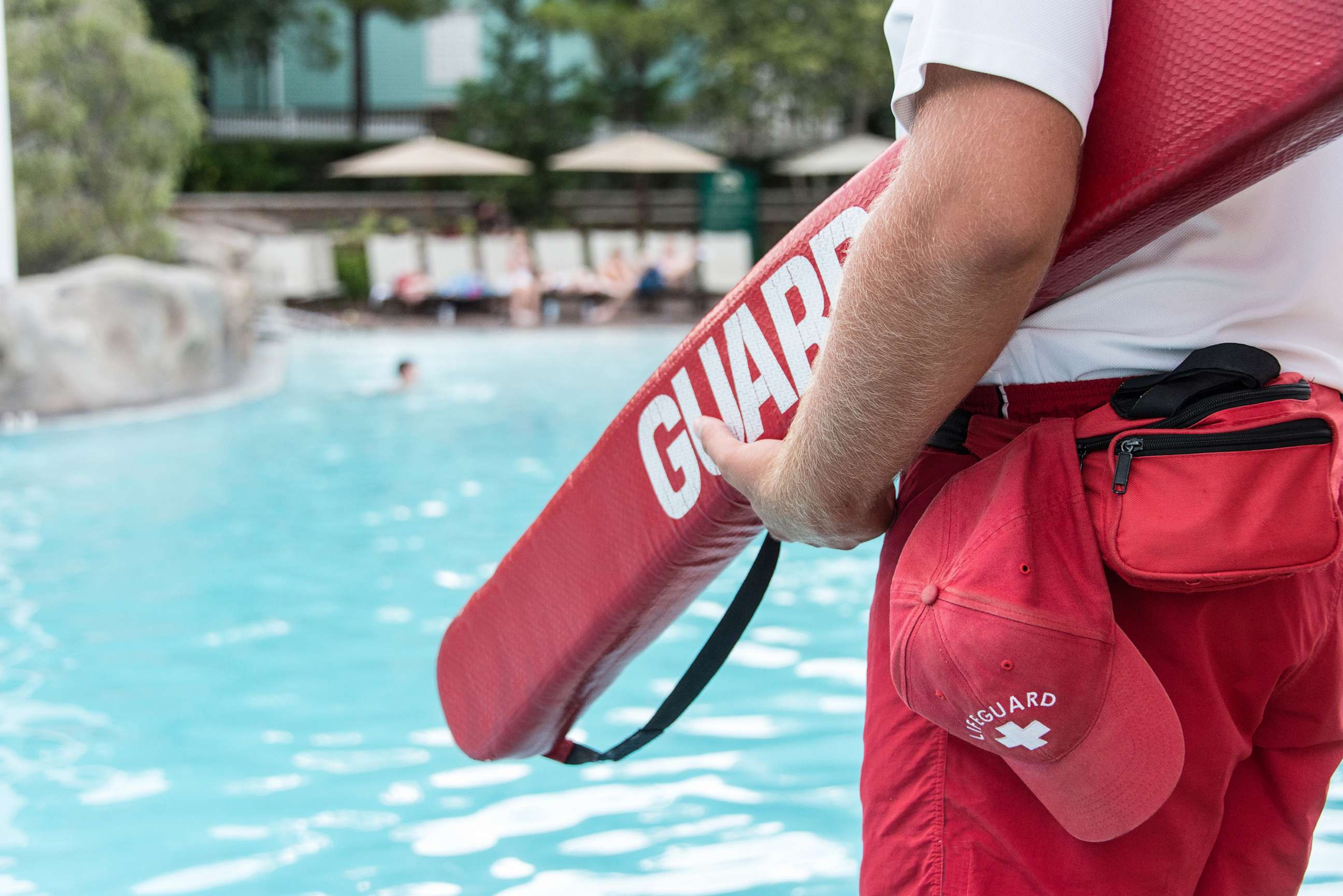Why pools are experiencing lifeguard shortages and how you can stay safe in the water
Some cities, like Houston, are offering new incentives for lifeguards.
For the third year in a row, a lifeguard shortage could cause thousands of pools to close or change hours this summer.
Wyatt Werneth, a spokesperson for the American Lifeguard Association and former chief lifeguard, told "GMA" that the profession used to carry more weight and is in need of renewed interest.
"There’s not any serious people wanting to become lifeguards. They don’t think that it’s a job of prestige and we need to bring that back," he said.

The American Lifeguard Association said nearly one-third of the nation's public pools are struggling to find lifeguards, which has been an issue since 2020 during the COVID-19 pandemic when many avoided public spaces like pools.
"We used to rely on people coming, enjoying the job and telling other people about it and coming back," Werneth said. "We've missed a couple of years of that, so fast forward to today and there just isn’t the interest."
Houston is offering a $500 sign-on bonus to fill the jobs during their high-demand months.
The Houston Parks and Recreation Department announced the incentive for trained lifeguards who are willing to work all summer with the first $250 paid after completing two full weeks on the job and the remainder paid at the end of the summer.
Despite the shortages, there are other steps swimmers and guardians can take to stay safe in the water.
Julie Gilchrist, medical adviser for the National Drowning Prevention Alliance, told "GMA" that water competency is paramount to make sure "everybody who's around has some kind of basic level of skill in the water."
"Your kids should have swim lessons, adults should know how to swim, how to intervene, what drowning looks like and how to do CPR," she said.
Essential water safety tips for parents
Adam Katchmarchi, executive director of the National Drowning Prevention Alliance and an assistant professor in sport management at Indiana University of Pennsylvania in Indiana, Pennsylvania, agreed that avoiding blue swimsuits is one way to prevent water dangers like drowning.
"After someone does experience a drowning incident, they can submerge below the water and whether that's in a pool or in a natural body of water, that can really distort what we're able to see surface level, to even see that there may be a situation we need to respond to," Katchmarchi told "GMA." "So wearing bright colors, no matter what the age, is really a good safety recommendation."
The National Drowning Prevention Alliance recommends parents practice five layers of protection to keep kids safe in the water. Those five layers are:
1. Barriers and alarms, like fencing around pools and alarms on doors and windows that open to the pool so an adult is alerted when they're opened.
2. Supervision that is "close, constant and capable" is critical for water safety, according to the Alliance.
3. Water competency, meaning that both adults and children should know how to swim. The Alliance recommends talking to your child's pediatrician about when to start water safety or swimming lessons.
4. Life jackets are needed whenever "on or around open and natural bodies of water and when boating," according to the Alliance.
5. Emergency preparation includes keeping a phone poolside to be able to quickly call 911 and learning and practicing how to perform CPR, according to the Alliance.
Katchmarchi noted that when it comes to supervision, bright bathing suits make a difference.
"Part of the supervision element is … making sure that you can actively supervise your child anytime they're around or in the water," he said. "And one of those ways is to make sure that they have a bright colored swimsuit."
Both Scarnati and Katchmarchi recommend parents seek out neon-colored swimsuits, such as neon yellow and orange that "are going to stand out in the environment."
According to the Centers for Disease Control and Prevention, drowning is a leading cause of death for children between the ages of 1 and 4.
Scarnati said she hopes her TikTok post, which has so far racked up more than 6 million views and nearly half a million likes, can prevent future drowning deaths.
"At the end of the day, drowning is the No. 1 cause of death in children under 4 and the second in children 5 to 12, so if I can give as many tips as possible to parents to help them make better decisions … just to help drowning statistics lower a little bit, then I've done my job," she said.
ABC News' Yi-Jin Yu contributed to this report.




